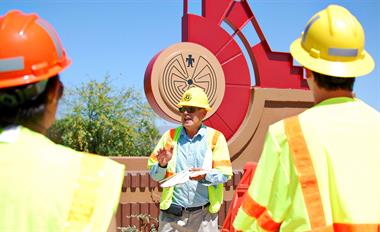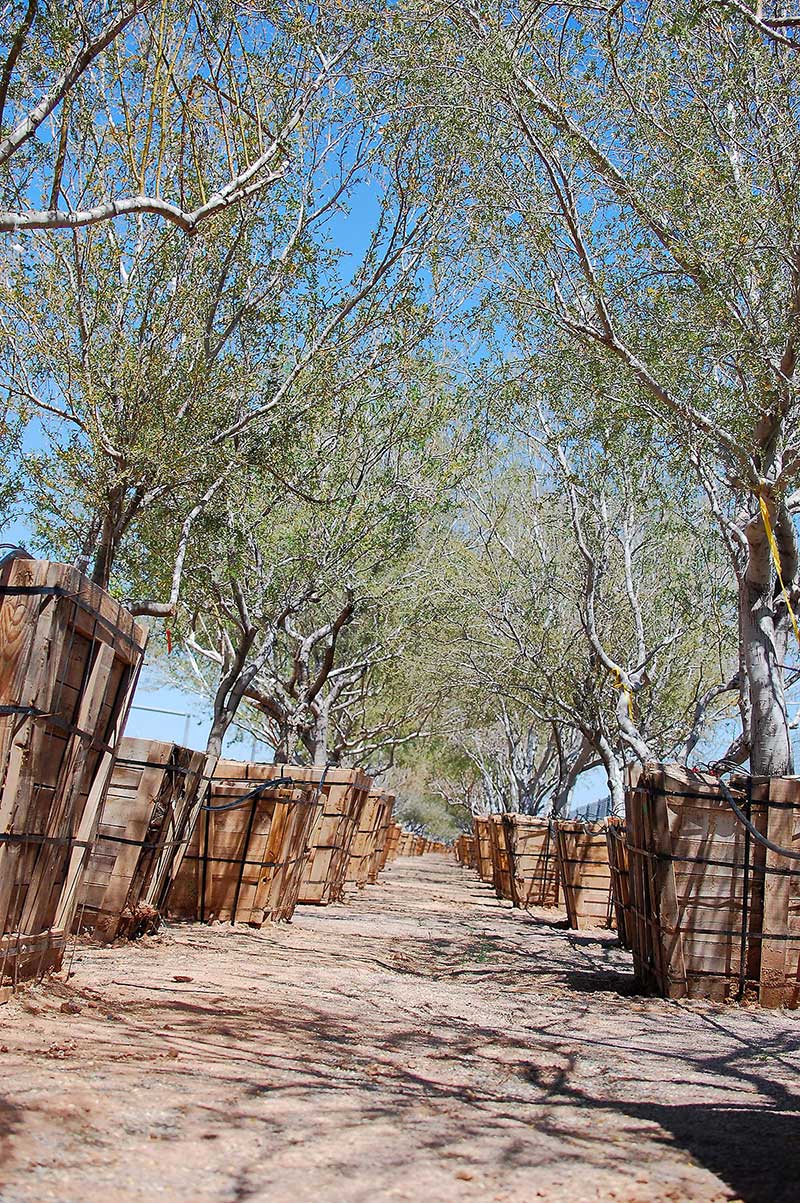ASU landscape architecture students get Loop 101 tour
ASU landscape architecture students get Loop 101 tour

ADOT Project Landscape Architectural Designer Joe Salazar shows paint samples to the students.
Learning doesn’t always have to take place inside of a classroom, sometimes it can happen safely near the side of a freeway!
That’s where a group of ASU students received a “behind the scenes” tour, packed with details on how ADOT’s Roadside Development section provides landscape, architectural and environmental technical design direction for projects statewide.
After sitting in on a morning construction meeting, the students – all juniors who are working toward their degrees in landscape architecture – were given a tour of the Loop 101 improvement project. The project, which will add new lanes in both directions of Loop 101 between Shea Boulevard and Loop 202 in the Scottsdale and Salt River Pima-Maricopa Indian Community, proved to be an excellent one to showcase.
“It’s an ideal example of all the aspects ADOT gets involved with … it contains everything,” said ADOT Project Landscape Architectural Designer Joe Salazar.

Just north of Chaparral Road, the students stopped to see the project's plant salvaging operation.
Yuri Lechuga-Robles, an ADOT intern with Roadside Development and also a student in the ASU class, helped to initiate the tour and agreed that the project was a good one to highlight.
“The project is one that the students were aware of, but probably never thought they’d be able to see from the inside. For that reason, it was a really good choice,” he said, adding that before beginning his internship at ADOT, he didn’t realize how much input goes into a project. “For me, the tour was an opportunity for my classmates to get a glimpse of what the projects are all about … just to have them see the size of the team that it requires was important.”
The first stop on the tour was off Loop 101, just north of Chaparral Road. Here, the students saw the project’s plant salvaging operation, where the cacti and trees that were removed for construction live for the project’s duration. The thousands of Ironwoods, Ocotillos and Saguaros are watered and cared for in the makeshift nursery until they can be replanted when the project nears completion.
ADOT’s Chief Landscape Architect LeRoy Brady told the students that many factors are vital when replanting salvaged Saguaros. Research has shown that Saguaros fare much better if they’re replanted at the same, exact depth they were originally growing – even just a few inches deeper can result in loss, he said.

Thousands of Ironwoods, Ocotillos and Saguaros are watered and cared for in the makeshift nursery.
The next stop was off the freeway at McDonald Drive for a look at the project’s paint pallet and decomposed granite samples. Salazar explained how ADOT worked with the community to determine the colors, which are all earth tones.
The tour concluded with a review of the project’s architectural design at the 90th Street bridge and a look how surrounding neighborhoods can be integrated into ADOT projects using walkways, bike lanes, equestrian trails and landscaping.
That community collaboration was definitely a big theme for the day…
Before the tour even began, students got the chance to hear from representatives from the Salt River Pima-Maricopa Indian Community.
SRPMIC Director of Community Relations Janet Johnson talked to the students about the meaning behind some of the symbols and artwork being used on the project. Terrollene Charley, of the SRPMIC Planning Services Division explained it is important to the community that the project’s landscaping reflects the indigenous desert surroundings.
The community collaboration made an impression on the students.
Cesar Del Castillo said he especially liked seeing how the surrounding communities play a part in the project.
Student Shane Ohlhausen agreed, saying he enjoyed the exposure to public works and being able to hear from the SRPMIC.
“It was a good experience,” he said.
